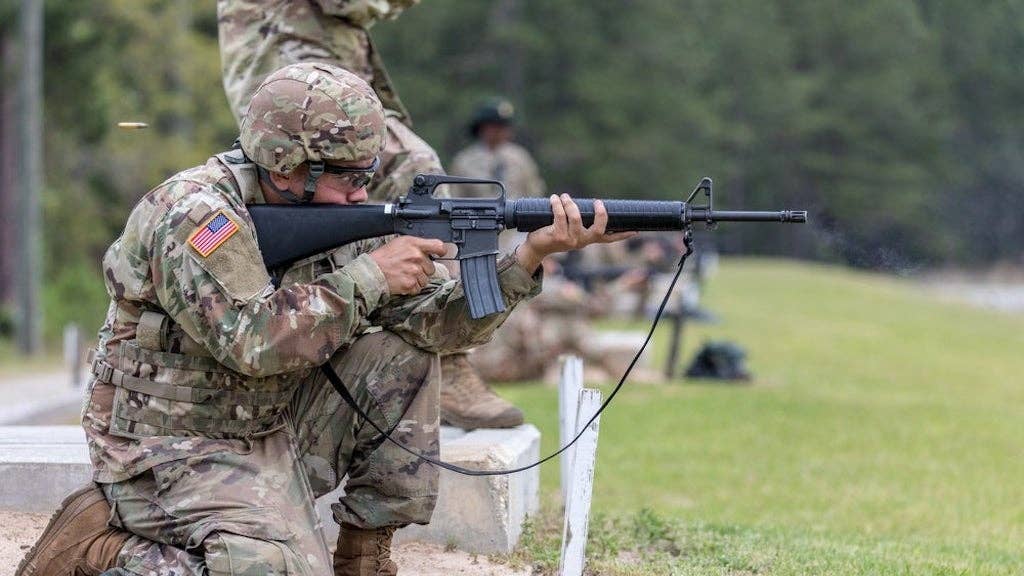3 improvements from the M16A1 to the M16A2

SUMMARY
Developed from the ArmaLite Rifle AR-15, the M16/M4 family of weapons is synonymous with the modern U.S. military. Naturally, certain generations are associated with different conflicts and eras. While the original M16 and M16A1 are linked with the Vietnam War, the M16A2 is connected to pre-9/11 conflicts like Operation Gothic Serpent, Operation Desert Storm and the early days of the Global War on Terror. The weapon's designer, Eugene Stoner, was not a fan of some of the changes implemented in the M16A2. However, there were some notable improvements seen with the post-Vietnam generation of the rifle.
Here are 3 improvements from the M16A1 to the M16A2
1. Handguards
Perhaps the most notable change, at least visually, from the M16A1 to the M16A2 is the evolution from triangular to round handguards. The M16A1, and older generations of the AR-15, used an early type of plastic that was cutting edge when Stoner designed the ArmaLite Rifle in the 1950s. Although this made the handguard light and the rifle easy to handle, the plastic was more prone to cracking and breaking than modern synthetics.
Moreover, the triangular handguards were different between the left and right sides. Troops were prone to dropping their M16A1s on the right handguard, requiring arms rooms to keep more replacements in stock than left handguards. The round handguards on the M16A2 are interchangeable between the top and bottom, simplifying logistics. Additionally, the polymer used in their construction is more durable.
2. Brass Deflector
About 12% of the U.S. population is left-handed. The AR platform ejects spent cases through an ejection port on the right side of the rifle. For a left-handed shooter, this means that hot brass flies in front of their face during firing and can even be thrown into their face depending on the rifle's gas system and ammunition. To prevent this problem altogether, the M16A2 introduced a brass deflector behind its ejection port. This metal extrusion blocks spent cases from flying back into the face of a left-handed shooter. Prior to the introduction of the brass deflector, left-handed troops were issued snap-on, plastic brass deflectors.
3. A2 Flash Hider
Early M16s and ARs utilized different versions of a three-prong flash hider. While this device worked well to reduce the rifle's visual signature when firing, the open design caused some problems in military use. Some troops reported that the prongs would get caught on the jungle foliage of Vietnam. Additionally, the metal prongs were used to open the wire wrapped around boxes of ammo or rations. This could bend the flash hider and even break it after extended misuse. With the adoption of the M16A1, the open-tine flash hider was replaced by a closed-tine one.
The A1 flash hider, also known as a birdcage, provided a similar level of flash reduction while preventing anything from getting snagged inside of it. The M16A2 improved on this design by closing the bottom ports of the birdcage. This prevents dust and debris from kicking up below the muzzle and also provides a small degree of recoil compensation. By directing gas upwards, the muzzle of the M16 is pushed down and helps the shooter maintain their sight picture.
Feature Image: U.S. Army
SHARE
